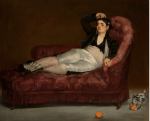January weather forecast? Frigid.
Blogger forecast? Sunshine.
Nominating or receiving a Sunshine Award is a way for bloggers to get to know each other. There are unlimited winners to this award because this operates much like the chain letters of old. Get an award from a fellow blogger, and then nominate 11 other bloggers to participate. I suspect that sooner or later, every blogger in the world will be nominated proving the blogging universe has no degrees of separation blogger to blogger.
That said, I was delighted to get a mention….really!!
The Sunshine award does give other bloggers an opportunity to learn about each other, although I am not sure any of the following random facts on me will be useful.
There are five “official” rules (in green):
RULE #1 Acknowledge the nominating blogger:
For me, that was Vicki Vinton of To Make a Prairie “A blog about reading, writing, teaching and the joys of a literate life.” Her blog is an amazing combination of education application and literature tie-ins. Her blog looks so organized and engaging. I know if I am thinking that something might be possible, Vicki proves that what I am thinking is doable. I will reread her posts before I write on a topic (ex: Cautionary Tale Close Reading).You owe it to yourself to visit her blog.
RULE #2 Share 11 random facts about yourself.
Okay…..11 random facts about me:
a. I have 31 nieces and nephews (no twins) from my eight younger brothers and sisters.
b. I made my prom dress in high school; I thought pink calico was adorable!
c. The famous clown Emmett Kelly, Jr. patted me on the head when I was a toddler; I am terrified of clowns.
d. I learned to drive a stick shift on my family’s white 68 VW bus that we called “Moby Dick”; consequently, I also know how to jump start a car with a stick shift.
e. I have one “attached” ear lobe and one “unattached” earlobe which is not the genetic abnormality you might think.

Kindergarten narrator
f. I was the “lead”narrator in my kindergarten play which surprised my mother and father. NOTE: I am still comfortable onstage.
g. I can recite Marc Anthony’s speech from Julius Caesar III.i.253-275(“O pardon me, thou bleeding piece of earth…”) because my high school teacher made me memorize a soliloquy.

Lock on the Pont L’Archevêché in Paris
h. My husband and I (married 32 years) left a lock on a bridge fence in Paris near Notre Dame in 2011.
i. I tear up at at flash-mob videos. Example? (USAirForce Band at Air & Space Museum)
j. I buy white cars because I want to be seen at night. Paradoxically, these cars always look cleaner than black cars.

My Halloween Haunted House
k. For many years,I had a haunted house for Halloween in my barn while my two sons were young. Now, I shut off all the lights on October 31st and pretend I am not home.
RULE #3. Answer the 11 questions the nominating blogger has created for you.
(Yikes….11 more facts? Aren’t you tired of all this?)
1. What book would you want with you if you were stranded on a deserted island?
How to Build a Ship and Navigate if You Are Ever Stuck on a Desert Island. The more romantic answer, however, would be James Joyce’s Ulysses or Ulysses S. Grant’s letters. Both are on a “to do” list that would require hours of uninterrupted reading time (the connection to Ulysses trying to get back home should not overlooked either…)
2. What did you learn from your mother?
I learned how to cook for a family of eleven; food was plentiful at our dinner table. Cooking is a great skill, but this early training resulted proportion miscalculations and substantial weight gain for my husband. I just cannot get used to cooking for two.
3. Where do you write?
There is a small table in my kitchen where I do much of my writing, but when the weather is nice, I will write on my back patio table. I imagine if I was driving by, I would think, “Oh! I would like to be writing there!”
4. Where do I find joy in my classroom or my work?
When I hear a student correct another student by saying, “a lot is two words.”
5. What do I do to recharge?
I watch movies. I am a movie addict which is not surprising given my addiction to stories.
6. What was my favorite book as a child and why did I love it?
Without question, my favorite book as a child was Little Women. I am the first born, the practical Meg, but in my heart, I am the second born Jo March.
7. If you could have dinner (or coffee or drinks) with anyone living or dead, who would it be and what would you want to ask him or her?
Sister Ella, my first grade school teacher who taught me to read. I want to know if she predicted my interest in reading. She was incredibly -almost frighteningly- tall, and I could never tell if she was smiling or not.
8. Do you have a quote that you keep (in your mind, a notebook, a pocket, your desk, etc.) that captures something that seems important to you? If so, what is it?
The most recent is by Carl Sagan, “What an astonishing thing a book is. It’s a flat object made from a tree with flexible parts on which are imprinted lots of funny dark squiggles. But one glance at it and you’re inside the mind of another person, maybe somebody dead for thousands of years. Across the millennia, an author is speaking clearly and silently inside your head, directly to you.” That’s impressive.
9. How do you feel about the age you are currently in?
Emotionally, I am fine with being 57. I have come to terms with things I will never accomplish (play piano, hike the Appalachian Trail) and still hopeful on other things I want to accomplish (PhD in English, speak French). Physically, I am surprised at how often I need to get up from reading or writing so I don’t get stiff and cramp up. Mentally, I am surprised that 57 sounds old, but 58 sounds wise.
10. What are you afraid of?
I do not like turning off the lights downstairs. To this day, I will race up the stairs as if something is chasing me.
11. If you could go back to one moment in time, when & where would that be & why?
In Our Town Thornton Wilder cautions against revisiting the past; the character Emily finds it too painful. Therefore, I would choose to relieve something I did as a child but not go as myself. I would go back to the 1964-65 World’s Fair in NYC and spend the day with all the exhibits that “predicted” our future.
Now for the fun part:
RULE #4. List 11 bloggers. They should be bloggers you believe deserve some recognition and a little blogging love!
NOTE: Should any of the following bloggers want to accept this award WITHOUT the chain letter-like activities, they have my permission. I have no demands for their participation in what could be a Ponzi-scheme of blogging. These bloggers represent a cross-section of Bloggers and Tweeters that I read regularly.
HOWEVER, readers who visit these blogs will benefit. I learn so much from all of these writer/educators…I feel their “love”:
1. First and foremost, my dear friend Catherine Flynn blogged so often in 2013 on Reading to the Core that I could not keep up. I walk with Catherine on the weekends (and I can hardly keep up!), so I am always interested in how our conversations show up in a post. She is a literacy specialist…and a specialist in keeping me focused on the real issues in literacy.
2. I love Bryan Crandall, Connecticut Writing Project (CWP) Director at Fairfield University. He supervised my CWP experience in 2012. His blog this year is Creative Crandall and his entry for January 1st, 2014, reads: “I will spend the next 365 pontificating what creativity means to my world, the people I love, the students I work with, and the teachers that need desperate rejuvenation. The goal is to counter the dreary, maddening, and absolutely criminal doings of governmental leaders and corporate partners who are undoing public schools.” Love that.
3. Another amazing Connecticut Writing Project Director is Jason Courtmanche at the University of Connecticut. His blog is The Write Space. His posts on Facebook/Twitter alert me to any gem I might overlook in the news that is tied to literature/education. He has worked very hard to outline the transitions of Common Core State Standards to the Early College Experience at UCONN for hundreds of high school teachers.
4. I met Kate Baker of Baker’s B.Y.O.D.– Bring Your Own Device, Dog, & Deconstruction of Literature in person at the Council of English Leadership (#CEL13) this fall. I had seen many of her posts/tweets. The meeting was kismet…in minutes we had covered The Odyssey, Moby Dick, and other classics. She gave a dynamite presentation of Stop Bleeding Red Ink! at the conference. (FYI: Kate already has posted 11 random facts about herself on her blog!)
5. My mom is in Idaho…and so is Glenda Funk at Evolving English Teacher. I first read her entries on the English Companion Ning; then, I stalked her at the National Conference of English Teachers in 2011. I LOVED her post about the impact of high school sports on academics: “What We Don’t Talk about When We Talk about Ed Reform in the U.S.A.” In that post she discusses the everyday impact of sports from practice schedules to concussions. Very informative.
6. I read Judy Artz at her blog Intergrating Learning and Technology-“Here you will find ideas for promoting literacy through the use of technology.” I met her in person also at Council of English Leadership (#CEL13) where I greeted her as an old friend. That is because she tweets (@JudyArtz) at a rapid fire pace, and sometimes mentions me!
7. I also met Daniel Weinstein of The Creativity Core at the National Conference of Teachers of English (@NCTE13) this November. I have used his ideas in my classroom, especially the semantic mapping, with enormous success. The blog is gorgeous with student work as exemplars.
8. Guilty pleasure? The observations of the Anonymous Blogger @ English Teacher Confessions. Entry “This book made me vomit” about Cormac McCarthy’s Child of God is an intriguing homage to McCarthy’s genius as well as a warning. Reading this post will give you an appreciation for this blog writer’s style…who is no slouch herself!
9. Buffy Hamilton, former high school English Teacher and current school librarian, writes at The Unquiet Librarian. She provides interesting and very practical ways to engage students in literacy (Writing Around Texts) through this dual lens. I am more appreciative of advice from educators who have actually been in a classroom.
10. I have participated in the “Slice of Life” challenge series originated by Ruth & Stacey:Two Writing Teachers this year. I admit, I do not always follow the rules (responding to others?!?), but I appreciate their tireless support of teacher writing. I have found that writing my blog (and slices) are the most educational experience I can have. They are to be congratulated for pushing teachers to engage in writing regularly.
11. Not sure where to start? Try The Reading Zone, Sarah Mulhern Gross who writes, “My blog focuses on reading, with a lot of writing and writing workshop thrown in. I also talk about my classroom and classroom projects.” What makes her blog even more legit? She is a regular contributor to The New York Times Learning Network Blog, my “go-to” spot for literacy in content area classrooms. (See how I snuck in two blogs on one entry?)
RULE #5. Post 11 questions for the bloggers you nominate to answer and let all the bloggers know they have been nominated. You cannot nominate the blogger who nominated you.
Here are Vicki’s 11 questions to me, and they are as good as anything I could design. I am plagiarizing them:
- What book would you want with you if you were stranded on a deserted island?
- What did you learn from your mother?
- Where do you write?
- Where do you find joy in your classroom or work?
- What do you do to recharge?
- What was your favorite book as a child and why did you love it?
- If you could have dinner (or coffee or drinks) with anyone living or dead, who would it be and what would you want to ask him or her?
- Do you have a quote that you keep (in your mind, a notebook, a pocket, your desk, etc.) that captures something that seems important to you? If so, what is it?
- What are you afraid of?
- How do you feel about being the age you currently are?
- If you could go back to one moment in time, when & where would that be & why?
So, dear selected Sunshine Award recipient, here is YOUR choice. You can answer any or all of the 11 questions listed above OR (and I am breaking the rules here) answer this ONE important question….
1. Why write on a blog?
Thanks again, Vicki of To Make a Prairie….this was fun to do on a bitterly cold winter afternoon!
 Pete Seeger was a collaborator. Someone acting with others to achieve a goal.
Pete Seeger was a collaborator. Someone acting with others to achieve a goal.



















